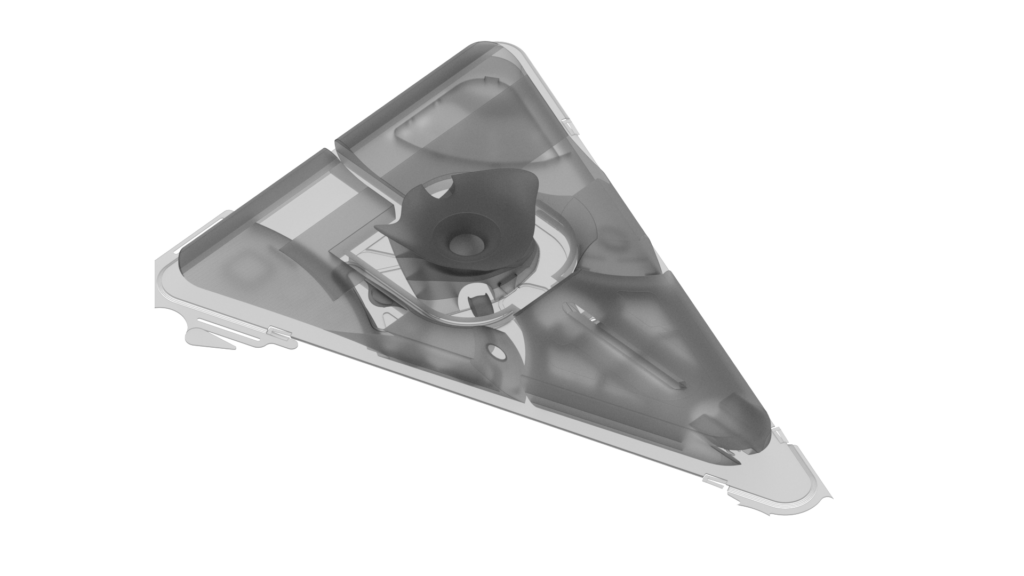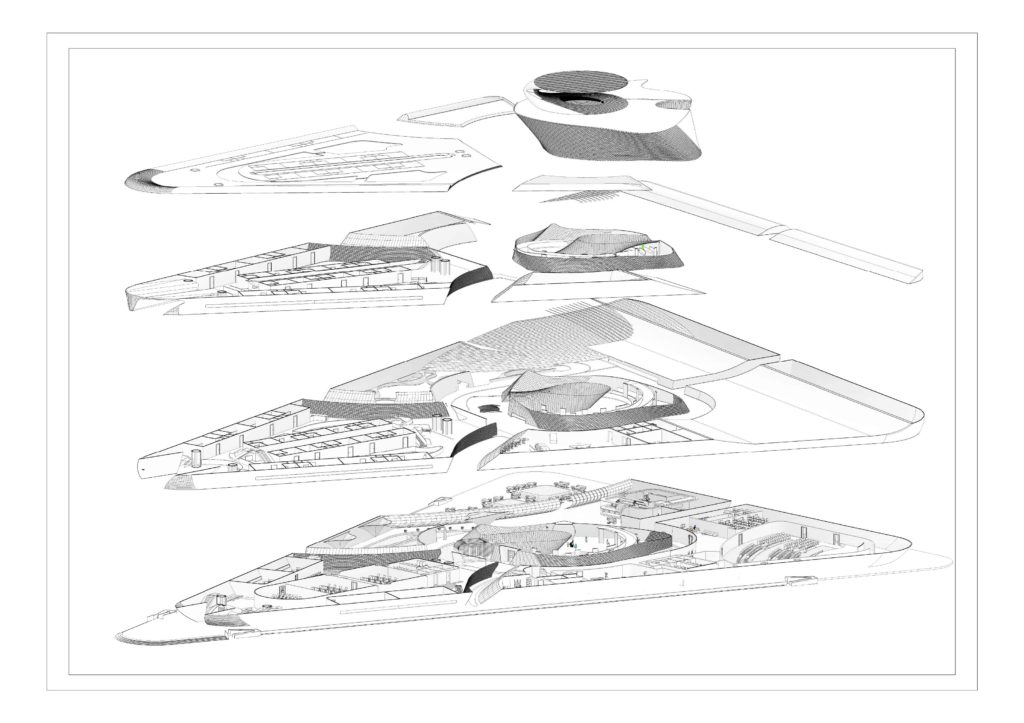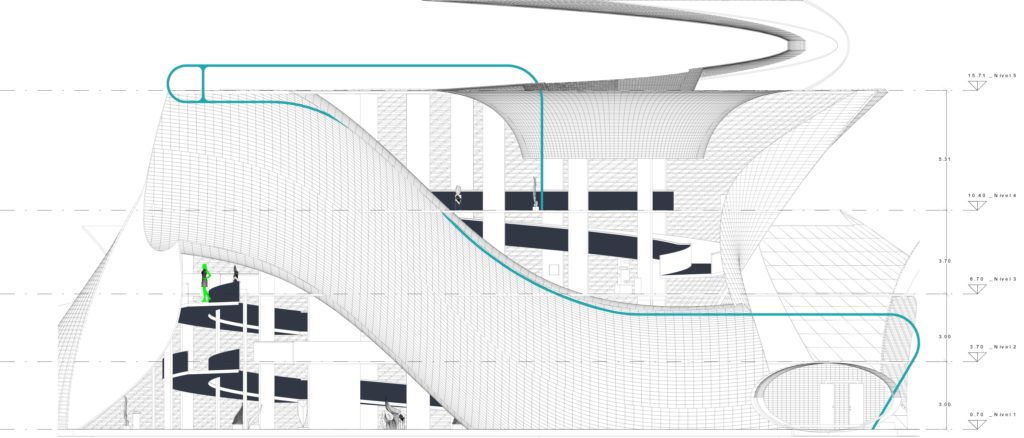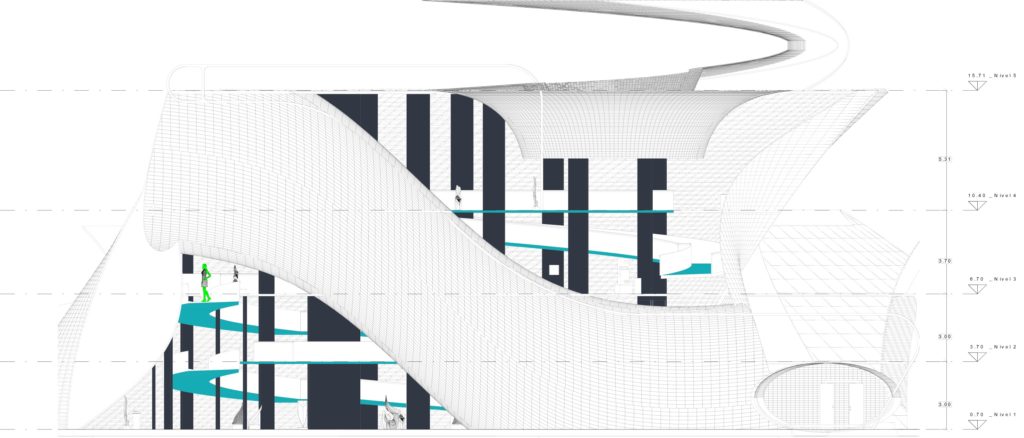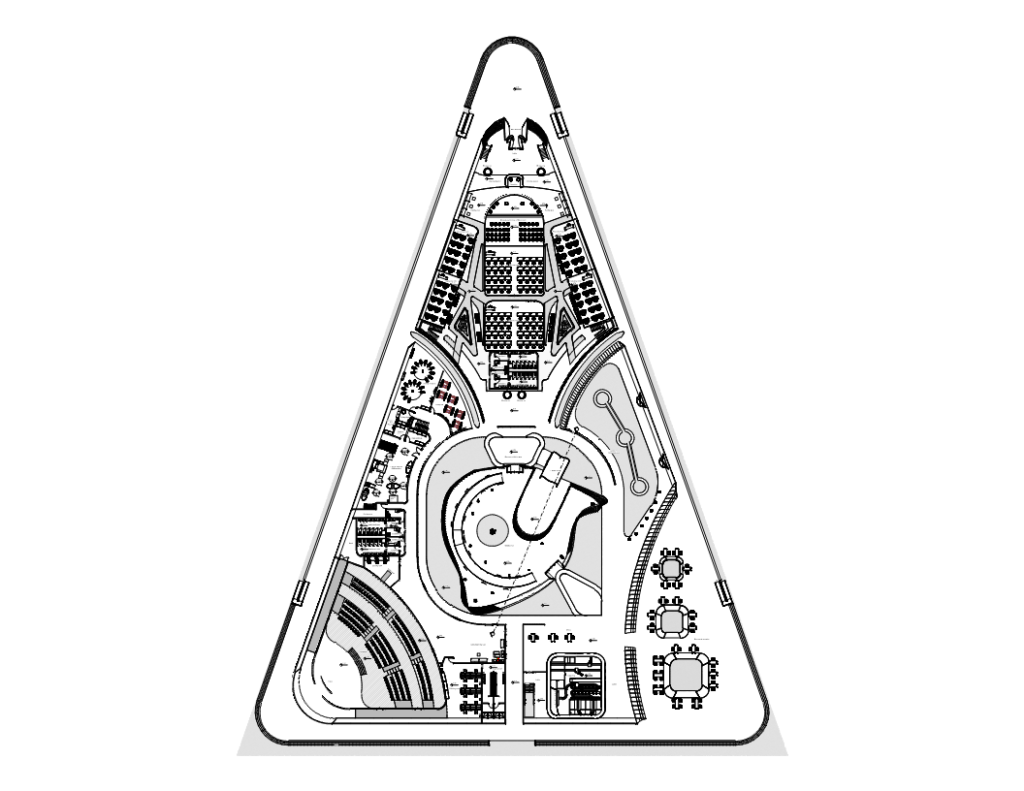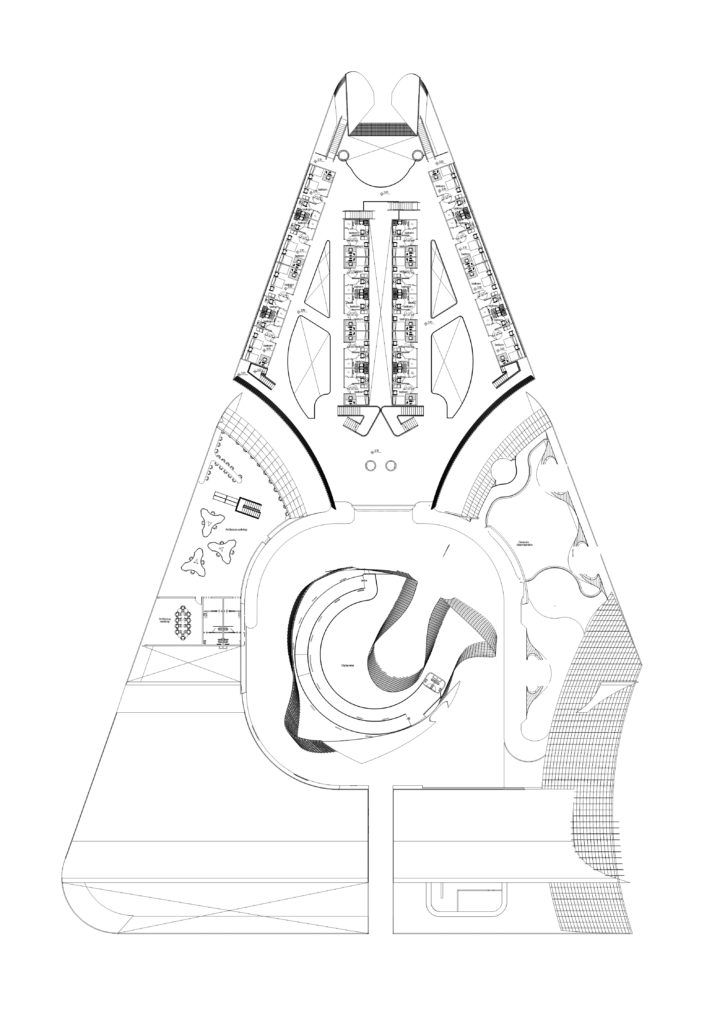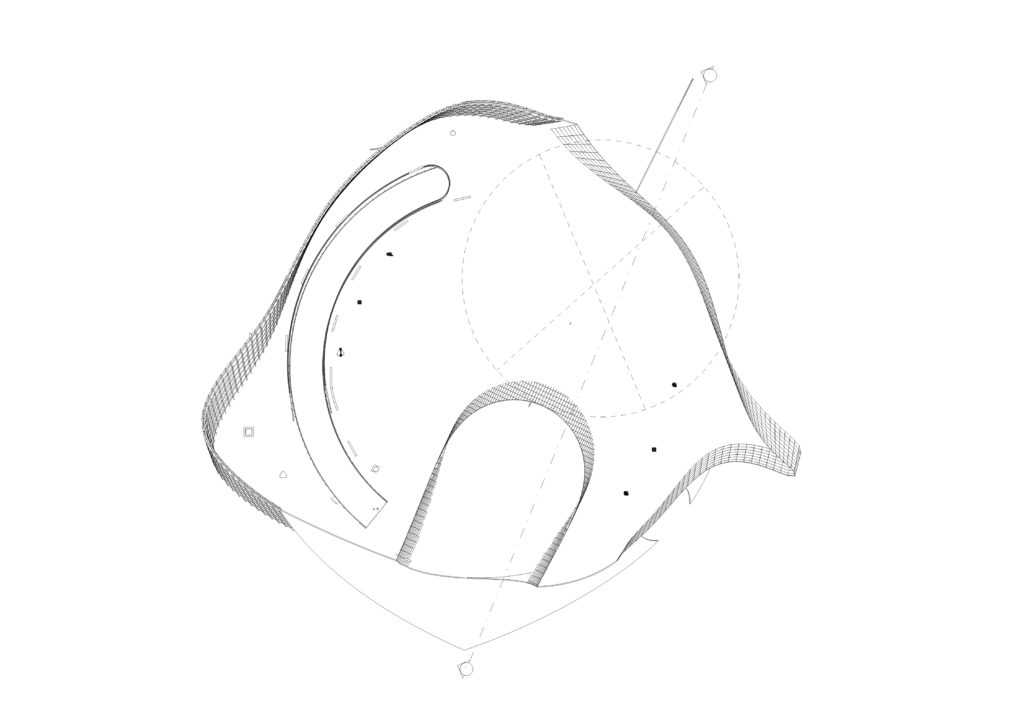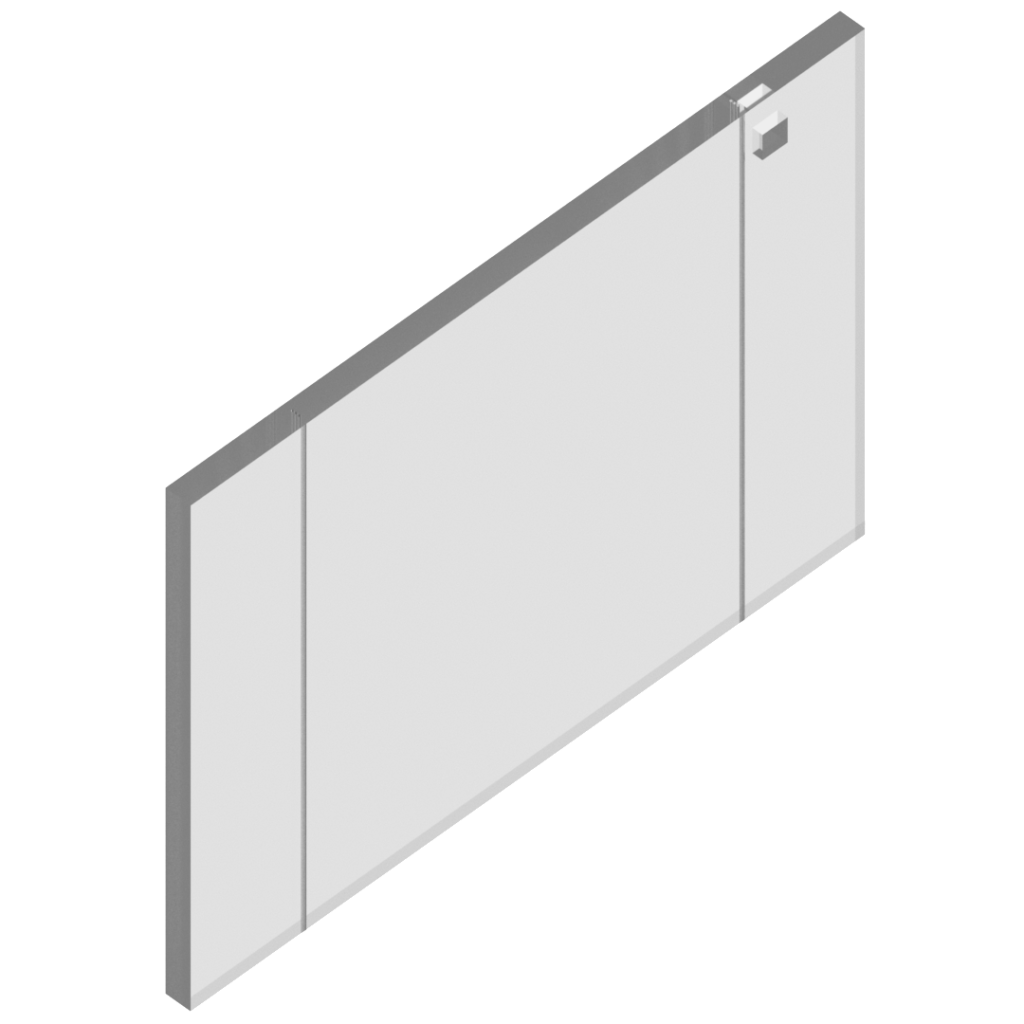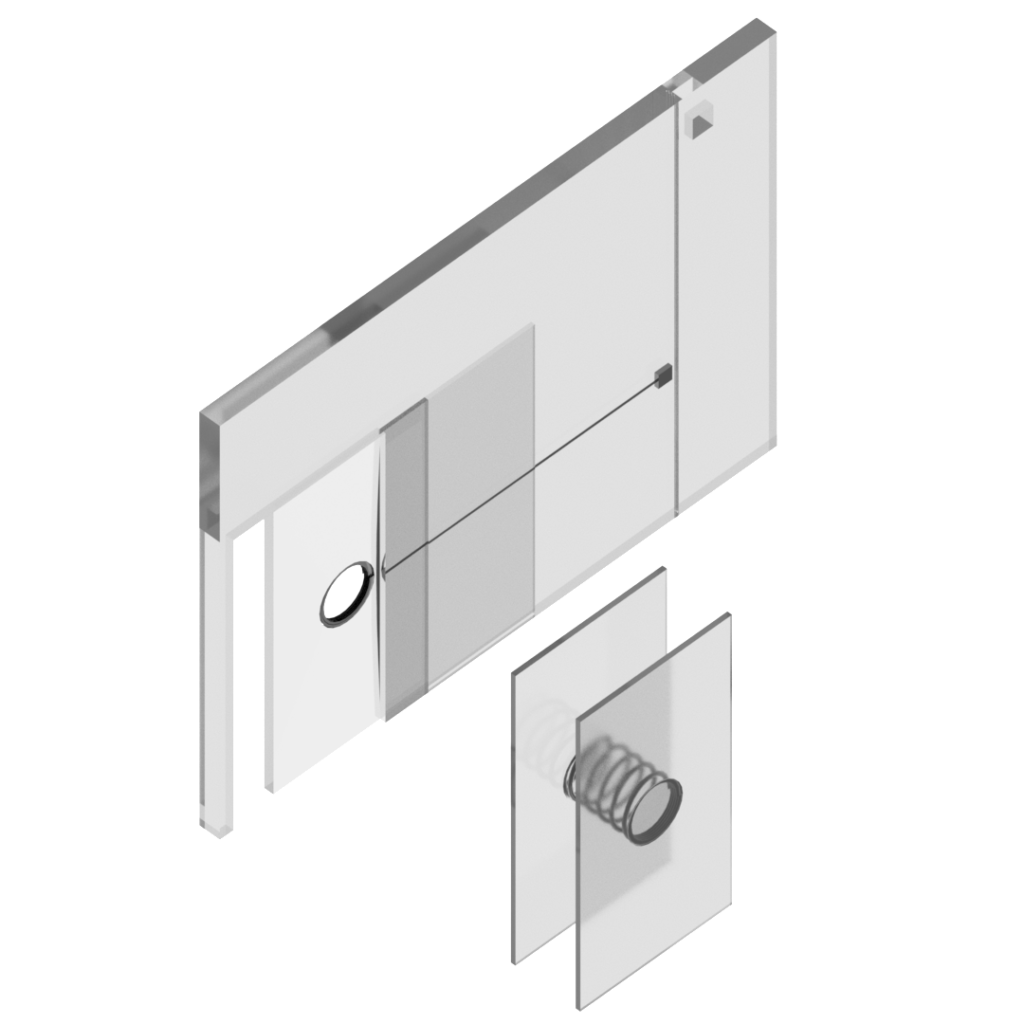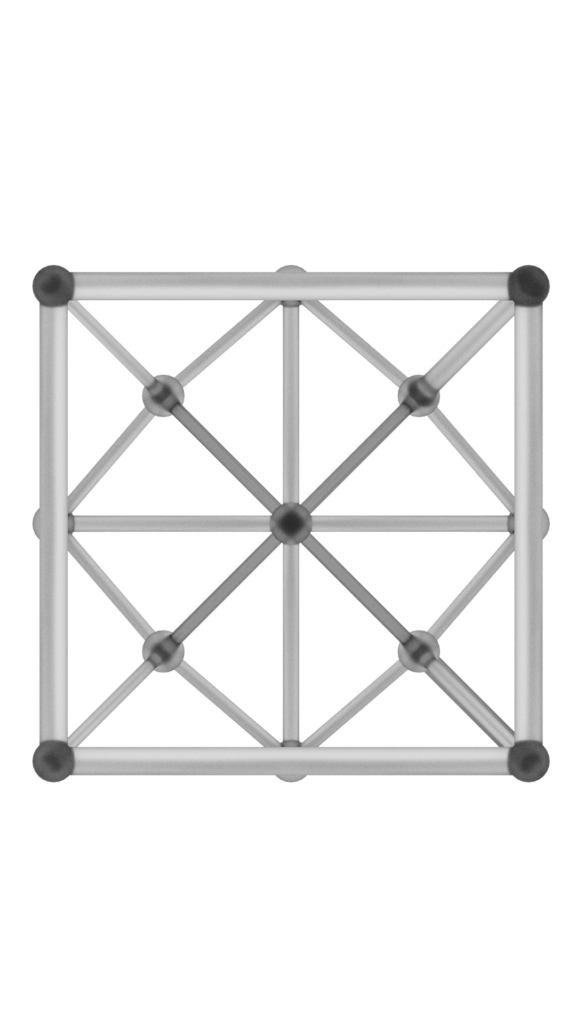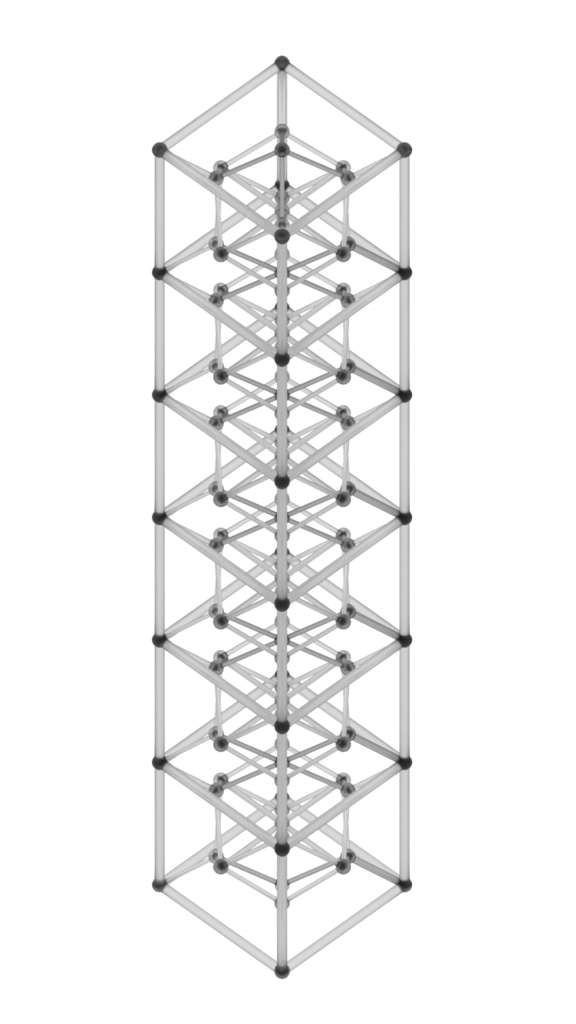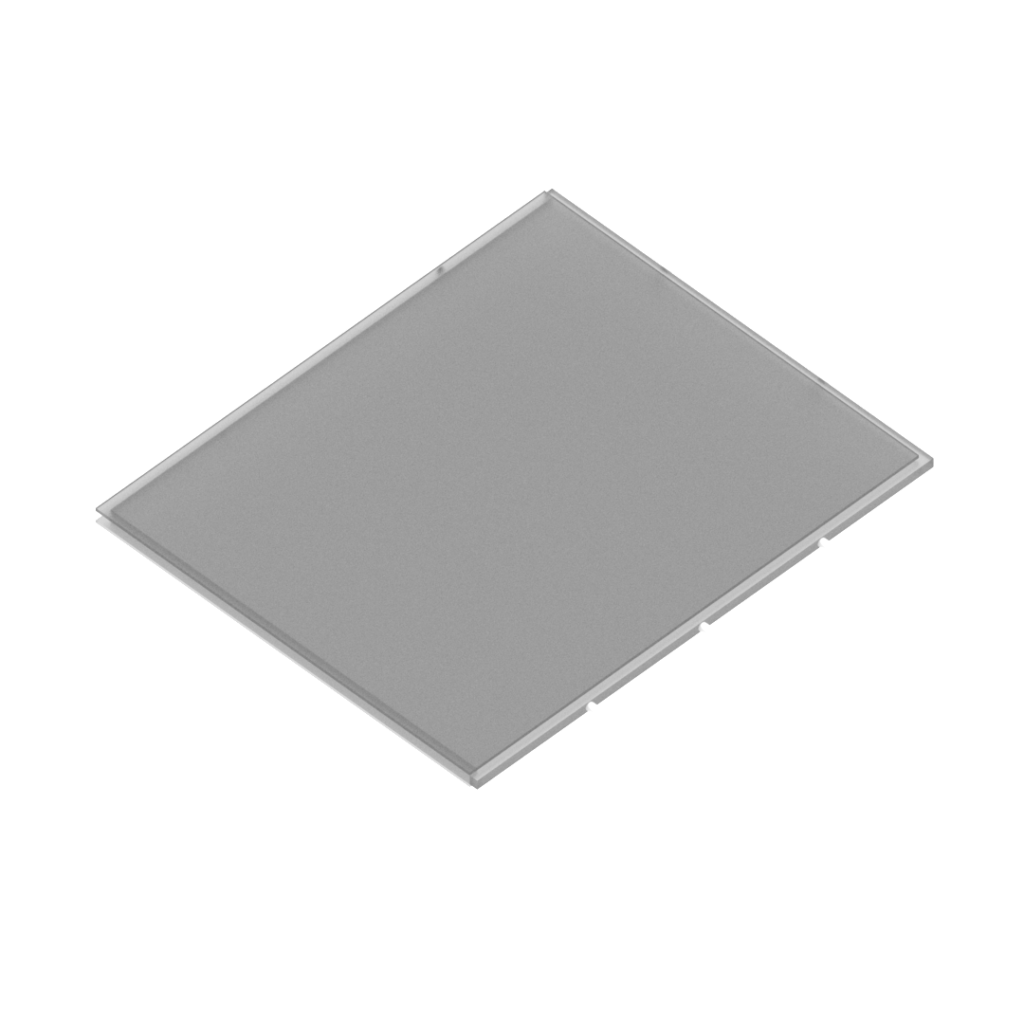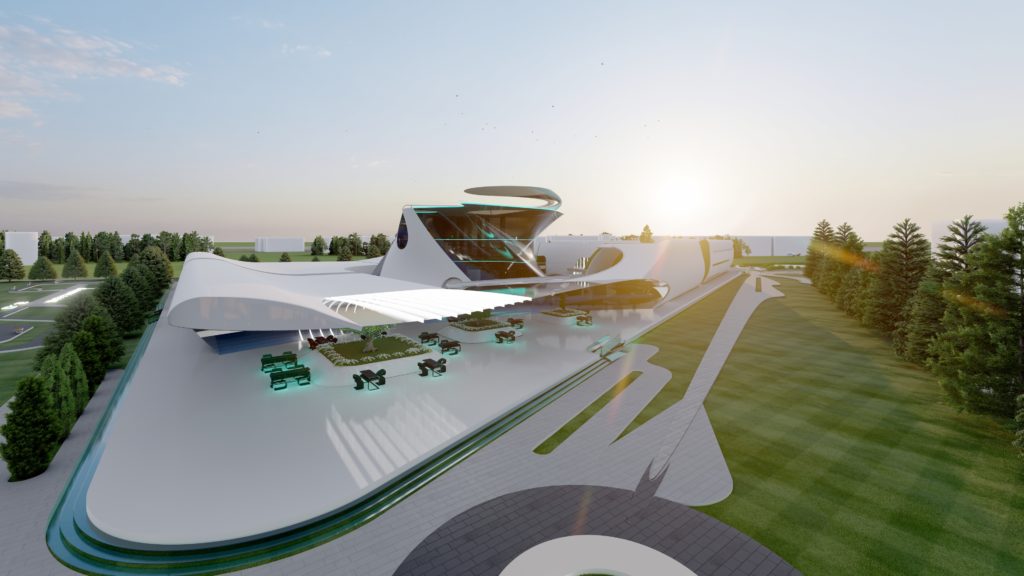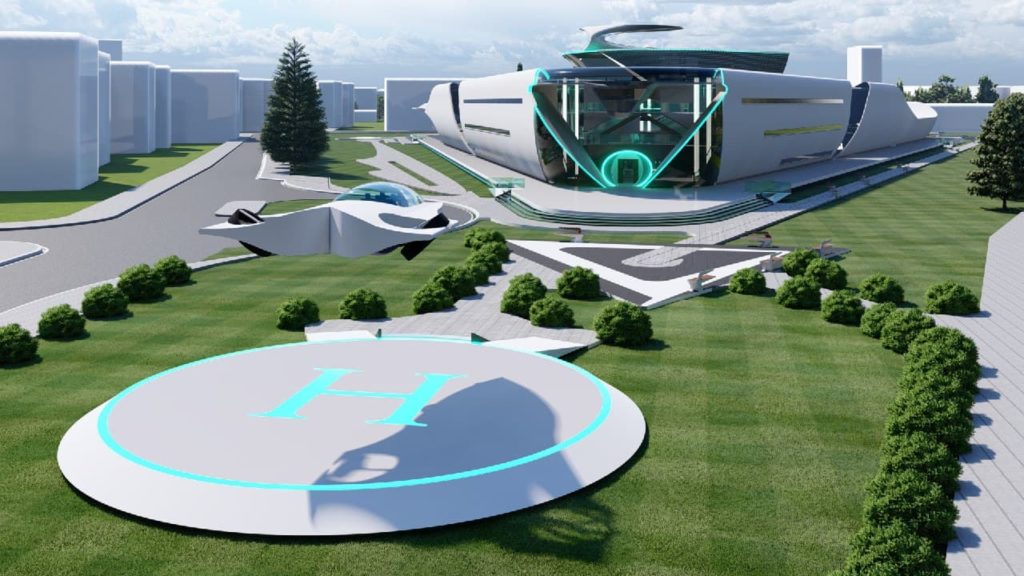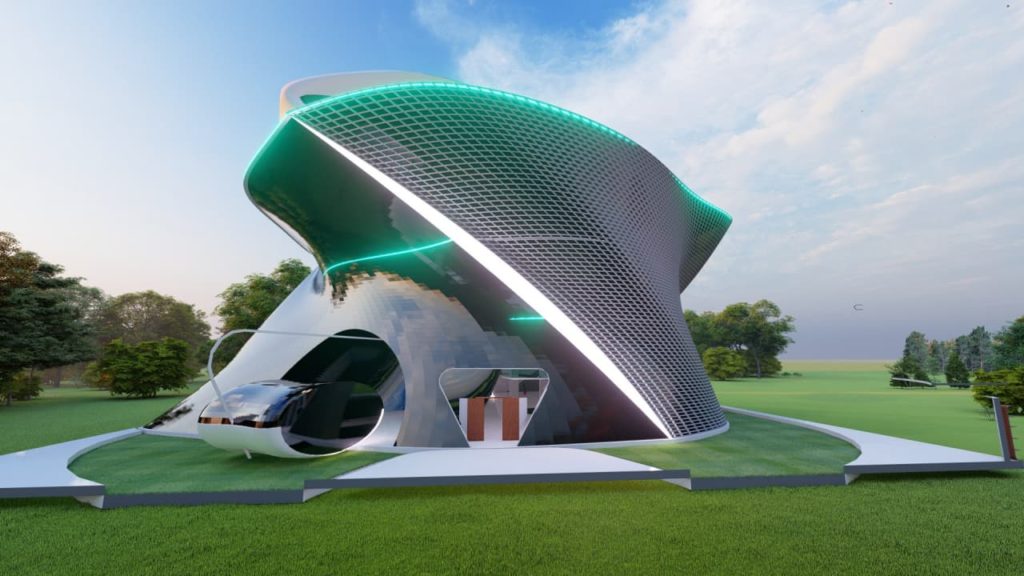Bauhaus Campus 2.0
The structure starts from the three basic shapes (square, circle and triangle), the triangle as the base, the square as the extraction and the circle as the central volume, transforming these shapes into prisms; such as the cube, cylinder and triangular prism, eliminating aggressive corners and slightly deforming the cylinder until it rotates on its own axis. This defragmentation is in order to represent how the building is assembled and disassembled.
A building conceived to set an example of an architecture that society can pursue, at the rhythm of technology.
Problem: the current buildings are too complicated to upgrade, which long term results in deprecated spaces, of hard restoration and remodeling. The building is an urban element, but it’s not connected with urbanism. The buildings are a living entity, but they don’t know we exist, we must make them know about our existence.
Proposal: Like LEGO’s, vehicles and cell phones, buildings can be designed in such a way that they can be assembled and disassembled, without compromising their structural capacity, thus creating a system that facilitates spacial and facade remodeling, and that minimizes the waste produced during construction.
Solutions:
Standardization of new materials and construction methods in all levels (structural, electrical, sanitary, networks, technologies, etc).
To encourage the creation of building factories.
To facilitate the transfer of buildings in an easy and safe way.
Recycling of a building as a whole (100%).
Building 100% assembled and disassembled.
Materials:
(Printable and 100% reusable).
PLA (Polylactic Acid).
ABS (Acrylonitrile Butadiene Styrene).
PET (Polyethylene Terephthalate).
PETG (Tereftalato De Polietileno Glicol).
Nylon Hips (High Impact Polystyrene).
Flexible (Thermoplastic elastomers or TPE).
Carbon Fiber Filament.
Filament PP Polypropylene.
Filament Peek (Polyether ether ketone).
Copper.
Duplex stainless steel.
Ferromagnetic materials.
Construction system:
General Information about the walls
The electrical system is conformed by 1cm copper bars, which will go from one end to the other vertically and horizontally.
The method of communication of the wall mother with the other walls and each module of the building, is made through receptors and repeaters within the electrical system of each wall.
Internal and external thermal sensors are used to regulate the temperature; proximity sensors that warn if a person or object interferes in any movement of a wall; and sound sensors for noise cancellation technology (anti-noise wall).
The material of the walls is composed of PEEK filaments.
Technological Innovation:
Coffee shop: It is composed of a robotic system that is responsible for the preparation, packaging and dispatch of food, with a cold kitchen, storage area, maintenance workshop, and cleaning bot area for each waste.
Structural module AMI (Atoms-Molecules-Ions). The structural module is inspired by the crystalline structure of lithium sulfate; In this figure, the vertical forces rest, directing them throughout the internal geometric system and through its 8-pyramid joint configuration, which ensures optimal resistance.
Elevator – Based on Maglev platform (Magnetic levitation).
Elevator. It uses the Maglev System of magnetic levitation that will take care of the ascent and descent of the platform.
Floors and ceilings. These are composed of hollowed-out strips and volumes that allow easy assembly between themselves and the beams, it has magnetic-firing metal cylinders that, being aligned with the holes where they will be inserted, will be fired allowing their fit and support.
Other technological innovations:
For the educational area, project development, teamwork, exhibitions, instructions, alerts, sculptures and other types of arts in the green areas and other spaces in the building will be used: augmented reality technology, 7D technology and whiteboards and murals connected to panels or desks.
Fire drone: As a secondary emergency system.
Aerothermy and underfloor heating: To regulate the internal temperature of the building.
Active noise cancellation technology (such as the SONO device that cancels and / or transforms outside noise): This technology will be found within the walls.
Interfaces on any surface: This technology will be in the luminaires, to turn any surface where the light reaches into a touch panel.
Tokamak Energy: Nuclear fusion reactor for the generation of clean energy in the building.
Touch point combination technology for interaction with tables and panels.
Touchless kinetics (to open the doors, turn on the lights and select the stop of the elevators, without touching the surfaces).
Drone Helipad for Air Taxis (Considered the future of transportation by ASTON MARTIN, BMW, AUDI, UBER, HYUNDAI and others).
5G (for connectivity and communication of the mother wall with the building and its users).
Hydraulic system for recycling and purification of water (rain and waste).
Walls:
Wall Mother
Is a super computer that controls the entire computer and electromechanical system, it is the brain that communicates with the walls, sensors and intelligent devices among other equipment that make up the entire building.
Wall Load
A wall with a function similar to (WS) with difference in thickness.
Wall Homely
A dividing wall, that is easily placed and removed by magnetic staple bars.
Wall Sanitary
Printed wall for sanitary use, made up of two parts, 1. block that connects the sanitary equipment with the wall and 2. the wall.
Wall Translucent
Wall using Electrochromic materials and change their color and transparency in response to a stress applied.
Wall window
A wall with a glass on top and centralized in the horizontal area, having the same composition as the (WT) on the glass.
Wall retractable
A wall with a scissor mechanism that connects on each axis of the mechanism allowing the wall to retract and extend.
Wall inside
A wall that can be extended and inserted into another.
Wall door
A wall that works with the mechanism of the WI, except that what is introduced is a door.
Wall pivot
Wall with the shaft in vertical, and is connected by rail-shaped tooth system that allows you to rotate the wall at any point resting the shaft.
Wall eyelash
A wall that opens in half to become a balcony.



